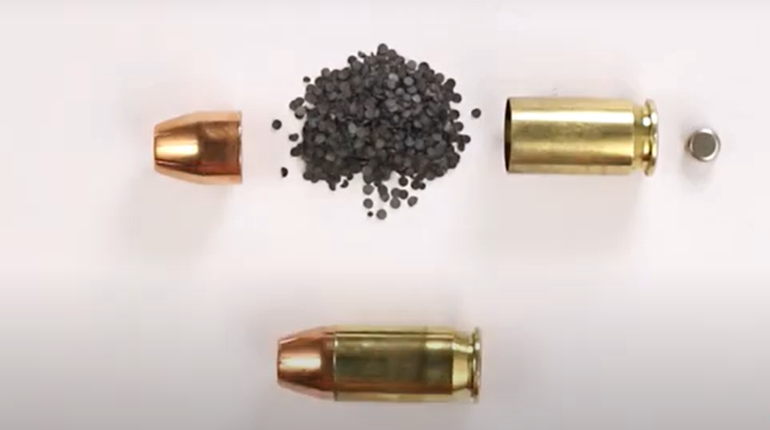
I enjoy reloading. Well, most of it anyway. I am not a fan of case trimming, a chore I find tedious and aggravating. Still, it’s necessary for the best accuracy and performance in any handloaded rifle cartridge.
Why is it important? If a case is too long, it may not enter the chamber all the way and will fail to fire. Many cases must be crimped to the bullet. Any ammo used in a tube magazine, like those found in many lever actions, must be crimped. Hard-recoiling rifle cartridges should have the cases crimped to the bullet to prevent the bullets migrating out of the case under recoil. Ammo to be used in a semi-auto rifle, like the AR-15 platform, often should be crimped to help maintain the bullet position during the abuse the case suffers during feeding. The cases must be of common length to maintain a consistent crimp, cartridge to cartridge.
If case-neck lengths vary, it can also lead to accuracy problems, a fact I recently rediscovered. I was developing a hunting load for a rifle chambered for .250 Savage Ackley Improved, and I was having some consistency issues. The groups would be two shots tight together and a third often an inch or more away. I built the rifle myself, so I know that the fault was not with the bedding, barrel, crown or any of the other usual suspects.

I checked the length of the cases, and they were all over the place. I had just received Lyman Product’s new Brass Smith Case Trim Xpress cartridge-case trimmer and thought it might be a good chance to try it out. The trimmer has a motor that plugs into any standard 120-volt outlet. A knob on the side turns it on and adjusts the rpm of the cutter. The trimmer uses a spring-loaded bushing that fits against the shoulder of the case. As you push on the case, it feeds against a cutter that is spinning at a high rate of speed.
I was afraid that none of the bushings would work with this wildcat cartridge, as it uses little case taper and a sharp 40-degree shoulder. I was surprised when the No. 13 bushing fit perfectly.
There is a micrometer adjustment that moves the cutter to adjust the case length one-thousandth of an inch per line. I adjusted the unit to just kiss the face of the shortest case in the lot. Then I trimmed the rest of them. It took a little experimenting to get the feel just right for how fast to feed the cases. After that, it was a simple matter to trim the rest of the cases. I loaded them and was delighted to find my accuracy problem resolved.
This unit is designed to work with bottleneck cases. It indexes off the shoulder, so the cases should be sized before trimming so that the shoulder is correctly located.
The unit comes with 10 bushings to fit most popular rifle cartridges. Additional bushings can be ordered to accommodate other cartridges.

Simply screw off the knob in the front of the machine, and then insert the bushing, making sure the spring is in place. Then tighten the knob. After adjusting the cutter so that the finished case is trimmed to the correct length, you can trim the rest of the cases with confidence. Simply hold the case in your hand and push against the spring, feeding the case mouth into the cutter until the bushing bottoms out against the spring. The adjustable speed allows fine tuning the cutter speed to match the case being trimmed.
There is no need to lock the cases into a device to hold them, which takes a lot of time. Just hold them in your hand, push against the bushing until it stops, then pick up the next case. My only complaint is that the spring seems to be a bit stiff and it causes hand fatigue after trimming several cases.
There is a cover over the cutter that will collect the trimmings and not make a mess on the bench. It is easily emptied into a trash can by rotating it to allow the trimmings to fall out. The unit is small and does not take up much bench space, particularly compared to some other powered case trimmers that are huge. It can be mounted on the bench, but I just hold it with one hand and feed the cases with the other.

Lyman claims a rate of 15 cases a minute, but I am a bit slower. I was averaging one minute to do 10 .223 Rem. cases. I run the case until I hear the cutter stop, then I turn it 180 degrees and run it again to correct any misalignment. That second step probably accounts for my slightly slower rate. However, it produces excellent results. I measured 50 trimmed cases and found less than .0005-inch variation in the trimmed length. This is outstanding consistency.
This is one of the simplest, fastest and most-accurate ways to trim cartridge cases I have tried. It will see a lot of use on my reloading bench. Lyman lists the MSRP at $164.95. However, a quick check on the internet shows a street price under $130.00.




































